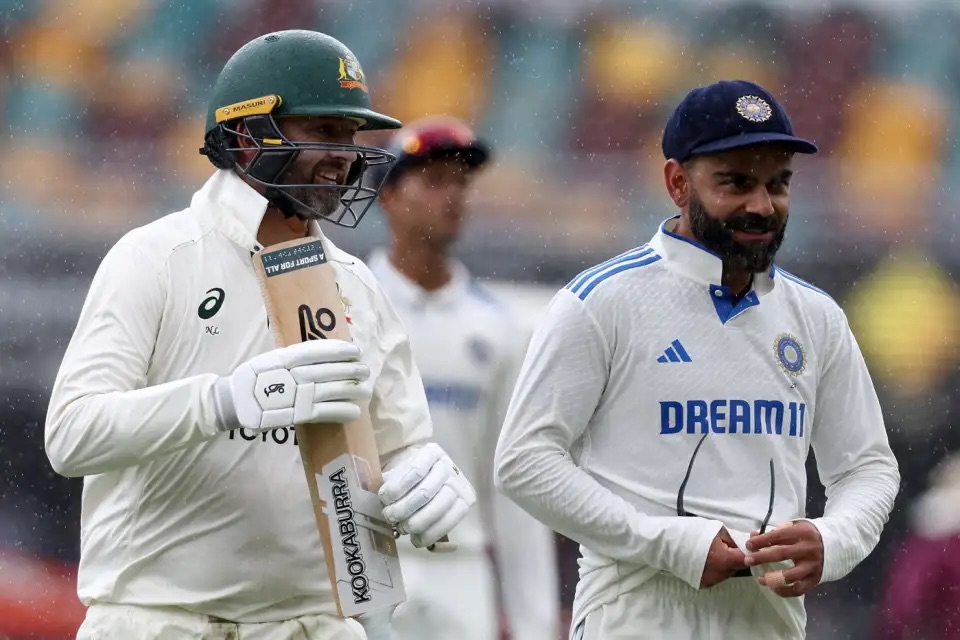In cricket folklore, The Gabba in Brisbane has earned its place as one of the most challenging venues for visiting teams. For India, The Gabba has become synonymous with resilience and the unyielding spirit of survival.
From the famous victory in 2021 to the thrilling draw in the ongoing Border-Gavaskar Trophy series, this ground continues to bring out the best in the Indian cricket team.
This isn’t the first time The Gabba has brought out the best in India. Who can forget the historic Test of January 2021, when an injury-ravaged Indian side chased down 328 runs to seal a memorable series win? That victory was built on similar foundations of resilience, with contributions from unlikely heroes like Shardul Thakur, Washington Sundar and Rishabh Pant.
In the ongoing series, The Gabba once again became a theatre of defiance.
Akash Deep, a relative newcomer, showed the world what India’s bench strength is capable of. Jasprit Bumrah, a seasoned campaigner, reminded everyone why he is one of the most reliable match-winners in the world. Together, they epitomised the never-say-die attitude that has become the hallmark of Indian cricket in recent years.
Facing a potential whitewash in the series, India fought tooth and nail to avoid a follow-on, with Akash and Bumrah leading the charge.
The rain on Day 5 may have sealed the draw, but India’s determination kept their hopes alive in both the BGT and the World Test Championship.
A look at how India turned adversity into a story of resilience once again at The Gabba.
Rain disrupted Day 1 of the third Test, allowing only 13.2 overs of play. India, opting to bowl first, saw Bumrah and Mohammed Siraj open the attack, but Usman Khawaja and Nathan McSweeney settled in comfortably, striking a few boundaries.
Persistent rain forced an early lunch, and no further play was possible. India made two changes, bringing in Akash Deep and Ravindra Jadeja for Harshit Rana and Ravichandran Ashwin.
Head-Smith torment India on Day 2
Day 2 saw Australia dominate as Travis Head (152) and Steve Smith (101) put on 241 runs for the fourth wicket. Head smashed his 9th Test century while Smith ended his century drought.
India’s bowlers struggled until Bumrah broke through with the new ball, dismissing both set batters.
Despite quick wickets, Alex Carey’;s crucial 70 and a steady partnership with Pat Cummins pushed Australia past 400. At stumps, Australia stood strong at 405/7, firmly in control of the match.
India’s top order succumb on Day 3
Day 3 saw rain interruptions but significant action as Australia posted 445, with Bumrah taking a brilliant six wicket haul. Akash Deep chipped in with a wicket to wrap up the innings.
India’s reply began disastrously, with Yashasvi Jaiswal falling for a duck, followed by Shubman Gill and Virat Kohli succumbing to Mitchell Starc and Josh Hazlewood.
Rain continued to disrupt play, but Australia maintained control. With weather concerns looming, India faced an uphill battle to recover in the match.
The fight to avoid the follow-on on Day 4
The fourth day saw India battling against the odds. With Australia dominating the game, the hosts were firm favourites to enforce a follow-on and march towards victory.
India’s top and middle order had collapsed under relentless pressure from the Australian pacers. But it was the final wicket pair of Akash Deep and Jasprit Bumrah who scripted one of the most courageous rearguards in recent memory.
Coming in with India needing 33 runs to avoid the follow-on, Akash, playing only his second Test, displayed nerves of steel. The Bengal pacer’s partnership with Bumrah was nothing short of heroic.
While Bumrah stood tall at one end, Akash took the aggressive route, smashing a boundary over the gully off Cummins to cross the follow-on mark.
The defining moment came when he launched a towering six, a shot that sent the Indian dressing room into raptures and deflated the Australian bowlers. Together, the pair added a priceless 47 runs, ensuring that Australia would have to bat again.
Akash’s exploits with the bat, using a bat gifted by Virat Kohli, became the talking point of the Test. His confident chest-thumping celebration after the six signaled that India was not going to roll over easily. The fight to avoid the follow-on not only lifted the spirits of the team but also showcased the depth of India’s resolve.
‘Jigra dikhaya hai,’ Rohit Sharma told the press conference, lauding the team’s fighting spirit on Day 4. ‘I’m proud of the attitude we have shown. Runs and wickets are important, but the character and intent we bring to the field matter just as much. We’ve been playing with real purpose and intensity, and that’s something every player has embraced.’
Speaking about Akash Deep, Rohit was full of praise for the young pacer. ‘Akash is a feisty character with incredible talent. He’s new to international cricket, but matches like this are invaluable for his growth. The way he held his nerve and performed under pressure speaks volumes about his potential. Games like these teach you lessons that no amount of training can replicate.’
Rain and resilience keep India alive on Day 5
On Day 5, India’s bowlers stepped onto the field with clear intent and an aggressive mindset. With Australia looking to declare quickly and push for victory, the Indian pacers, led by Bumrah, Siraj and Akash, turned the tide with a spirited bowling display.
The goal was simple: Not allow Australia to score freely and restrict their lead to a manageable margin of 60 to 70 runs.
Bumrah struck early, removing Usman Khawaja and Marnus Labuschagne cheaply. Akash showed tremendous heart and skill, taking crucial wickets and ensuring the run rate stayed in check. Siraj joined the party, delivering a vital breakthrough to dismiss Travis Head.
Australia quickly slumped to 33/5, leaving Cummins and Carey scrambling for runs. Despite a quick cameo from Cummins, India wrapped up the innings at 89/7, giving themselves a fighting chance.
As Yashasvi Jaiswal and K L Rahul took guard under overcast skies, the threat of rain loomed large. The pair survived a nervy few overs, seeing off Australia’s fiery opening spell.
Just when the contest seemed to be heating up, bad light and rain intervened, forcing the players off the field. Despite several inspections, the weather refused to relent, and the match ended in a draw.
For India, the rain was a blessing, but their resilience had already made its mark. By avoiding the follow-on and standing firm against Australia’s aggression, India ensured that they stayed alive in the series.

 Cricket News5 months ago
Cricket News5 months ago
 Cricket News5 months ago
Cricket News5 months ago
 Cricket News5 months ago
Cricket News5 months ago
 Cricket News5 months ago
Cricket News5 months ago
 Cricket News5 months ago
Cricket News5 months ago
 Cricket News3 months ago
Cricket News3 months ago
 Cricket News5 months ago
Cricket News5 months ago
 Cricket News5 months ago
Cricket News5 months ago

















